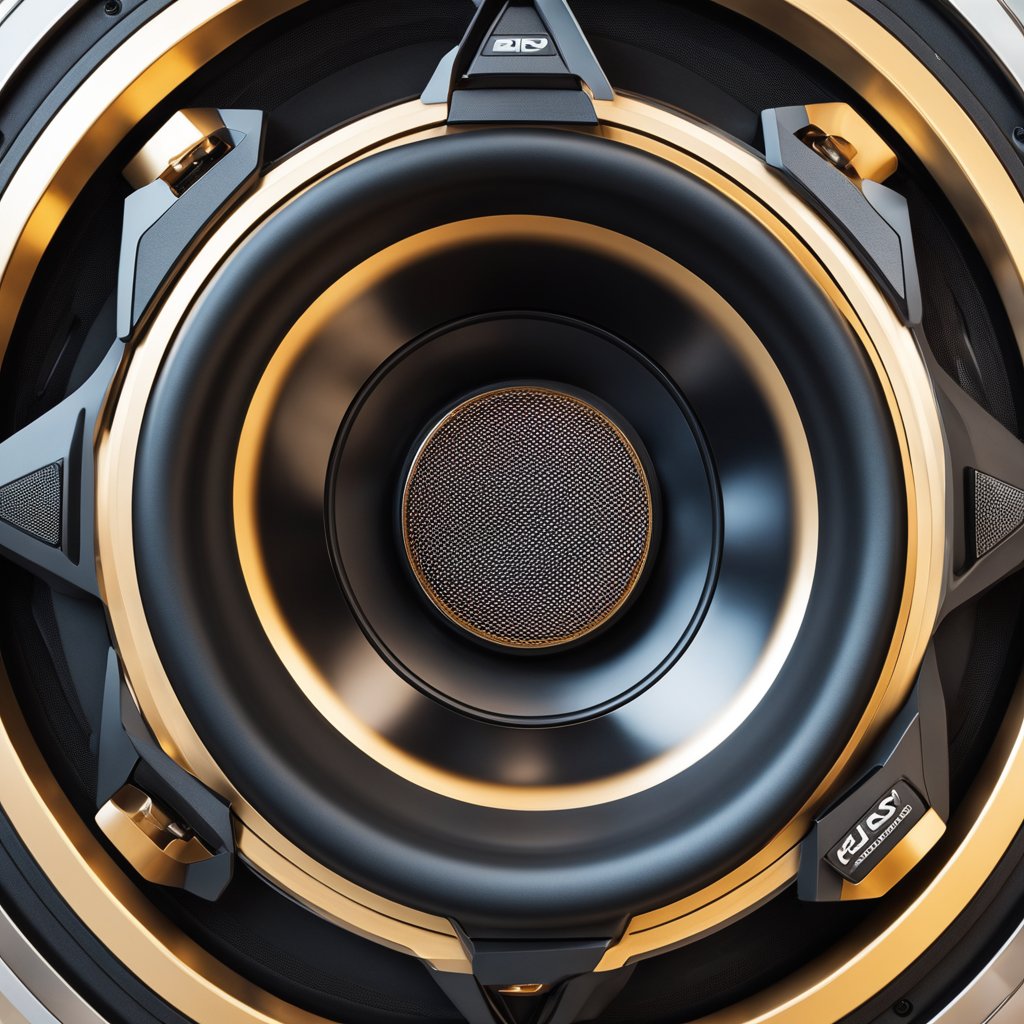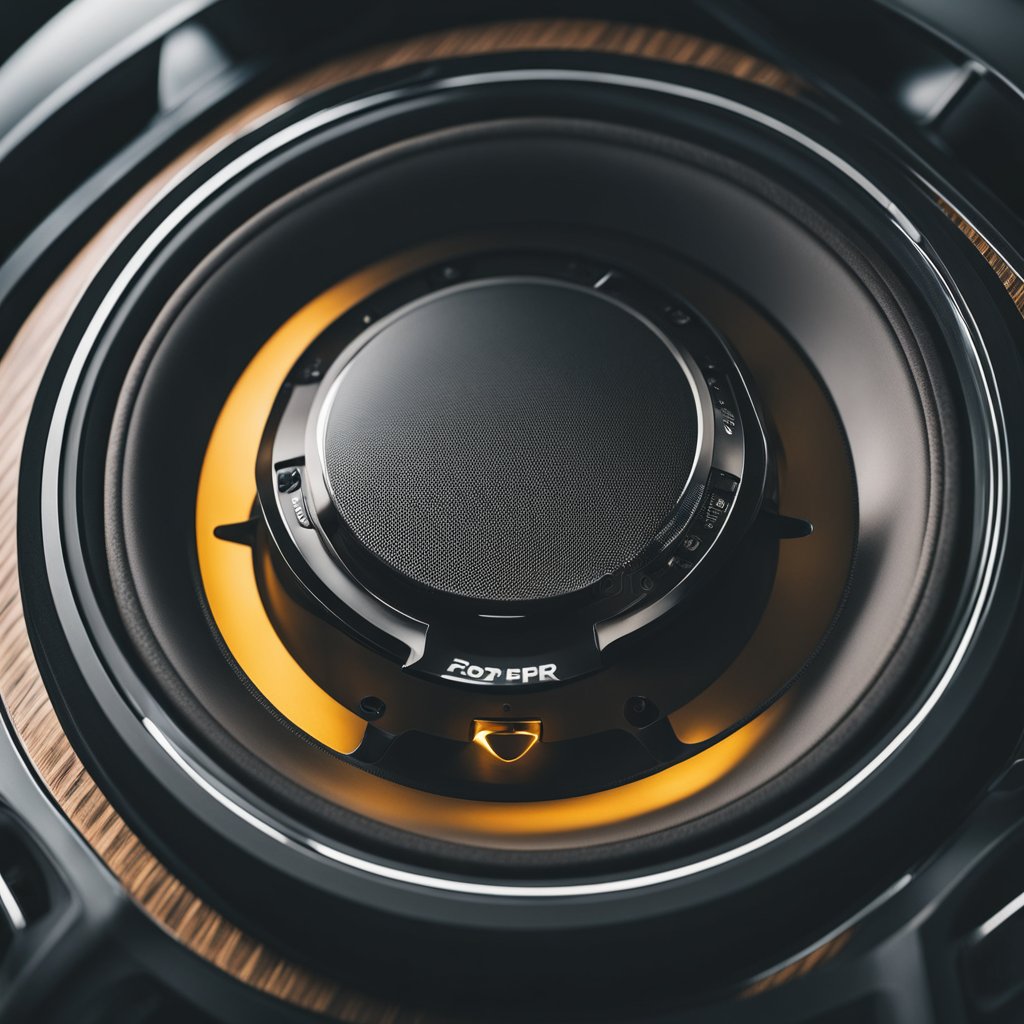When it comes to enhancing the audio experience in cars, the choice of speakers is pivotal. I have found that car speakers specifically designed for bass and sound quality dramatically transform the listening environment within the vehicle. The bass component, in particular, provides the depth and richness that music enthusiasts crave, while overall sound quality ensures clarity and detail across the audio spectrum.

In my research and personal experience, selecting the right speakers entails more than just wattage and brand recognition; it involves understanding the acoustics of your car, the compatibility with existing systems, and the nuances of speaker types. Coaxial speakers tend to offer a straightforward installation with built-in tweeters for a full range sound, whereas component systems offer a higher level of customization by separating the tweeter and woofer, providing an enhanced audio scene that audiophiles appreciate.
My evaluation of the best car speakers for bass and sound quality takes into account power handling, sensitivity ratings, and the quality of materials used in construction. Durability is also crucial, as the interior of a car is a challenging environment for electronics. With these criteria in mind, speakers that stand out typically combine technical prowess with precision engineering, resulting in a driving experience that’s as audibly satisfying as it is exhilarating.
Understanding Car Speaker Basics

In my exploration of car audio systems, I’ve found that a comprehensive understanding of the basics is vital for making informed choices. Let me guide you through the key aspects of car speakers, from the types available to the crucial specifications and the importance of material quality.
Types of Car Speakers
Coaxial speakers are the most common type found in cars; they feature multiple speaker elements, such as the woofer and tweeter, integrated into a single unit. Component speakers, on the other hand, separate these elements—woofers, tweeters, and often midrange drivers—allowing for more flexibility in placement and potentially improved sound quality.
- Woofer: Handles low-end frequencies, producing bass.
- Tweeter: Produces high-end frequencies, offering clarity.
- Midrange: Covers the middle portion of the frequency range, crucial for vocal clarity.
Key Speaker Specifications
When assessing car speakers, I pay close attention to several specifications:
- Frequency range: Indicates the breadth of sounds the speaker can produce; the wider the range, the better the capacity to replicate various musical notes.
- Impedance: Typically measured in ohms, it refers to the resistance the speaker offers to the flow of current from an amplifier. Common values are 4, 8, or 16 ohms.
- Sensitivity: Measured in decibels (dB), it determines how effectively a speaker converts power into sound. A higher sensitivity rating means less power is needed to produce the same volume.
- Power handling: Describes the speaker’s capability to handle power without distortion. It consists of RMS (continuous power handling) and peak power ratings.
Material and Build Quality
The durability and sound quality of car speakers are influenced by the materials used. For example, polypropylene is a popular material for woofers due to its rigidity and dampening properties. Titanium and other metals can be used for tweeters, providing durability with quality sound reproduction. When evaluating speakers, I look for:
- Rigidity: A measure of how resistant the speaker components are to bending and flexing.
- Durable construction: Longevity of speakers is determined by how well they can withstand the environmental conditions inside a vehicle.
By focusing on these core principles, I ensure that I’m equipped with the knowledge needed to choose car speakers that deliver high fidelity sound and endure the test of time.
Selecting the Best Speakers for Bass and Sound Quality
When it comes to enhancing the audio experience in your car, the choice of speakers is paramount. I’ll guide you through identifying the best speakers for robust bass and superb sound quality while considering the balance between quality and value.
Identifying the Best Speakers for Bass
For bass enthusiasts, my focus is on speakers with a strong bass response that minimize distortion at high volumes. Subwoofers are critical for a powerful bass, but quality full-range speakers can also deliver impressive results. The Rockford Fosgate R1675X2, with its 6.75-inch size, is noted for its robust performance. Similarly, the JBL GTO609C offers impressive bass handling with its superior components. For a more customized experience, installing a dedicated amplifier can significantly enhance the bass output from these systems.
Optimizing Sound Quality in Your Car
Sound quality isn’t just about bass; it’s the clarity across all frequencies. Premium speakers, such as the Focal ISU 165 or ES 165, deliver exceptional midrange and treble details. They feature built-in crossover networks to ensure that high frequencies are directed to the tweeters, while mids are sent to dedicated drivers, achieving a well-balanced, clear sound. It is crucial to ensure that these speakers are correctly powered, potentially with an aftermarket amplifier, to reach their performance potential.
Installation and Configuration Tips
Correct installation is key to maximizing speaker performance. I recommend consulting with a professional for installing brands like Focal Access 165 to ensure proper mounting and connection. Ensure that any added components like tweeters are positioned to optimize the soundstage without introducing noise. Finally, adjusting the crossover network settings can fine-tune the audio to match the unique acoustic environment of your car.
Balancing Quality and Value
Determining the best speakers involves a balance between sound quality and value. Speakers like the 6.5-inch Focal Access 165 strike an excellent balance, offering superb sound without breaking the bank. Understand the specs like peak power and performance but remain mindful that the most expensive choice isn’t always the best for your specific needs. Guard against overinvestment in higher-end options if a mid-range speaker offers the quality of bass and sound you desire for your listening pleasure.
Enhancing the Car Audio Experience
To truly elevate my car audio experience, I focus on utilizing advanced speaker technology, adding personalized accessories for tailored sound, and diligently maintaining and upgrading my speaker system for optimal performance.
Advanced Speaker Features
When I select car speakers, I prioritize advanced features like two-way and three-way speakers. A two-way speaker comprises a woofer for low frequencies and a tweeter for highs. In contrast, three-way speakers add a midrange component for more detailed sounds. Additionally, some four-way speakers integrate extra tweeters for enhanced clarity. The quality of materials, such as silk dome tweeters, affects the sound’s warmth and smoothness, while inverted dome designs can provide a wider dispersion of sound. My speakers’ performance hinges on their voice coil size and the mounting depth, which need to match my car’s specifications for a seamless installation.
Personalizing Sound with Accessories
To personalize audio, I consider adopting various accessories such as speaker grilles to protect from physical damage while ensuring sound isn’t muffled. The correct grilles also serve an aesthetic purpose, blending with my car’s interior. Subwoofers are also key for me in achieving that desirable deep bass. I might perform a quick fix on my speakers with better-quality woofer cones made from durable materials to improve sound responsiveness and durability.
Maintaining and Upgrading Speakers
Regular maintenance is pivotal for preserving sound quality. I keep my speakers free from dust and moisture, and I periodically check the connections. When upgrading, I ensure my new speakers fit the existing mounting depth and that they come with the necessary hardware for installation. Swapping out older speakers or adding a complementary subwoofer can keep my system sounding fresh and powerful.
Conclusion
When selecting car audio equipment, my choice is centered around achieving a superior sound experience in a vehicle. With numerous options on the market, honing in on the right speakers involves evaluating criteria such as power handling, sensitivity, frequency response, and construction quality.
For those dealing with tight spaces, size compatibility is crucial. I seek speakers that not only fit seamlessly but also deliver on sound. It’s possible to find compact models that do not compromise on bass or clarity. Here, it’s important to remember that larger speakers generally produce better bass, but with advancements in technology, even smaller variants can surprise you with robust performance.
In my final selection, the emphasis is on durable materials and trustworthy brands. These speakers should stand the test of time and maintain the integrity of the audio quality throughout their lifespan. Quality components like rubber surrounds and rigid cones contribute to this longevity.
As you’re looking to upgrade your car’s audio system, I’d recommend that you base your decision on a balance between sound quality and the physical constraints of your vehicle. The right set of speakers can transform your driving experience, filling your journeys with rich bass and clear, dynamic audio.
Frequently Asked Questions
When selecting car speakers for the best bass and sound quality, it’s important to understand the key elements that contribute to superior audio performance. Below, I’ve addressed common questions that can help guide you in making the right choice.
What factors should I consider when looking for car speakers that provide both excellent bass and sound quality?
The factors to consider include the power handling capacity, typically measured in RMS for continuous power handling and peak power for bursts. The speaker’s sensitivity rating, the materials used for the construction of woofer and tweeters, and the type of speaker enclosure all play vital roles. Additionally, look at the frequency range to ensure deep lows and clear highs are covered.
How can I achieve deep bass in my car audio setup without using a subwoofer?
To achieve deeper bass without a subwoofer, choose speakers with a good lower frequency range and high power handling. Also, consider speakers with larger cones and bass-enhancing technologies such as passive radiators or bass ports.
What characteristics define the best car speakers for achieving high-quality sound reproduction?
The best car speakers usually have a wide frequency response, low impedance, and use high-quality materials such as silk or woven fabrics for the tweeters and durable, lightweight cones for the woofers. They also incorporate advanced crossover circuits to ensure that the right frequencies are sent to the appropriate drivers.
Is it possible to get car speakers with powerful bass without an amplifier, and if so, how?
Yes, it’s possible. Look for car speakers with high sensitivity, as they can make the most of the power they receive from the head unit without needing an external amplifier. Additionally, speakers with larger cone areas can move more air, resulting in better bass response.
What are the top-rated car speakers known for delivering the most bass impact?
Speakers like the Rockford Fosgate models are known for delivering significant bass impact. These often feature a combination of high power handling, sensitivity, and carefully engineered woofer materials that contribute to their ability to provide deep and powerful bass.
How does the car speaker size and type affect the overall sound quality and bass performance?
Generally, larger speakers have the potential to produce deeper bass due to the increased cone surface area, which allows for more air movement. Coaxial speakers, which have the tweeter built into the woofer, can be a good space-saving choice with decent bass and sound quality, while component speakers offer superior clarity and soundstage but may require more space and installation complexity.
Leave a Reply